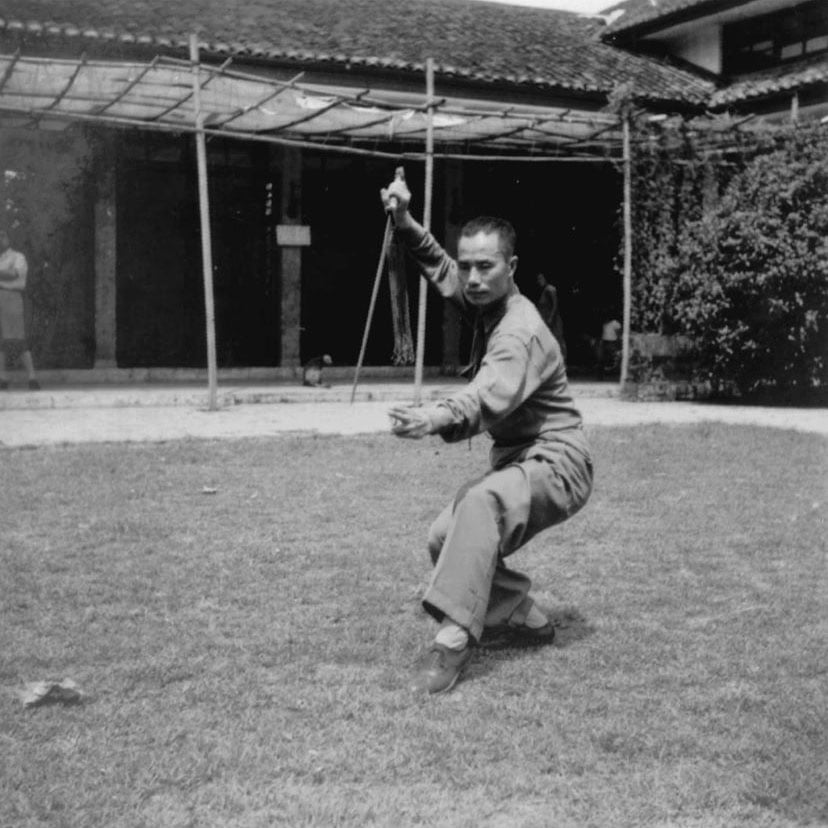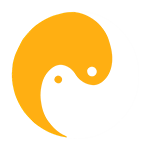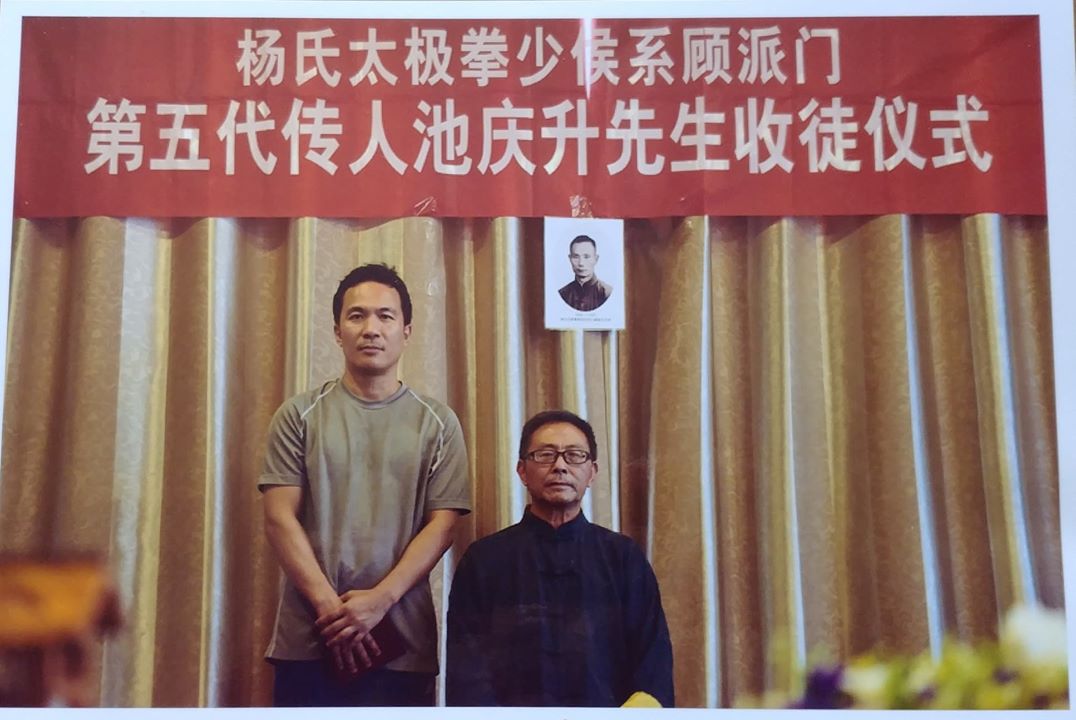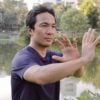Translate from: 杨氏太极拳老架十三势大功架
Author – Nan Ming district cultural officer/ Zhang Jing Yu

Taijiquan is a Traditional empty-hand Chinese martial art. After several hundred years, it gave rise to various styles, including Chen, Yang, Wu, Wu/Hao, and Sun. The art of Taijiquan has been taught not only in China but also overseas.
Yang family Taijiquan is one of the primary schools. “Old Yang family big frame Taijiquan thirteen postures” is the form that was created by the founder, Yang Lu Chan (1799-1872). It is the early style of Yang family Taijiquan, which has a history that dates back more than 200 years.
The old Yang family big frame Taijiquan thirteen postures is the form that Yang Lu Chan passed down to his sons (second generation, grandmasters Yang Ban Hou and Yang Jian Hou) through his grandson (third generation, Yang Shao Hou) and from his grandson to a student, Gu Lisheng (fourth generation). It was then passed down to Gu Lisheng’s closed-door-student Chi Qingsheng.
The old Yang family big frame Taijiquan thirteen postures contains several significant differences to the Yang style standard form and also the national competition form, which can be explained as follow:
- The old Yang family big frame Taijiquan thirteen postures contains several significant differences to the Yang style standard form and also the national competition form, which can be explained as follow: The harmonization of internal and external “Chan Si Quan” (Chan Si Quan is a circle/rotation, sometimes it is called Luo Xuan Jin, it is different from Chan Si Jin in Chen style), which is also included the attention to the internal Chan Si circle. The movement is compact, and Jin is strong and concealed. Chan Si circle is quite small, and the movements are subtle and thorough, speed is quite slow yet smooth and continuous. Fa Jin is soft on the surface, but the strength is hidden in the inner core. This form also emphasizes the movement of the inner Chan Si circle, used to propel the external Chan Si circle to move. Using Nei Qi (internal energy) to move the external posture. Using the waist to move the body. Using the body to move the hands until, finally, the Nei Qi can move the internal organs and all over the body, including all limbs and the skeleton. When practicing, the form must send Jin through to four extremities. It is an exercise that one can use to harmonize the movement of internal and external as well as developing Yi and Qi from the inside.
- The second Fa Jin is softer and more concealed compared to the Fa Jin in Chen Family Taijiquan. There will be a small leading-neutralizing movement (Yin-Hua) after the end of first Fa Jin and then, Fa Jin again. This is the illustration of the beginning style of the Yang family Taijiquan, which was adopted from the Chen family. All middle frame and large frame forms also have this kind of concealed Fa Jin.
- The Postures are large and wide, slow yet smooth, open and expanded, hard and soft inside, and contain both heaviness and lightness. Including all eight gates; Peng, Lu, Ji, An, Cai, Lie, Zhou, Kao, (eight Jin); Step forward, retreat backward, look (left), gaze (right), and center. All five steps (the direction in five elements theory) which is the main structure, contents, and movement of the Taijiquan thirteen postures. The form can be divided into six parts, which are the inheritance and collection of ancient theory, the old style that has been secretly passed down and can be seen in《 The nine technique of Yang Banhou》(班候九诀)
- The theory and philosophy of Taiji are used as a guideline and content of exercise, use tranquility to conquer motion, follow, and borrow force. Use soft against strong. These are the main features of Yang Family Taijiquan. The depth of the art also allows practitioners to enjoy the art and enhance one body and health.
Master Chi Qingsheng has held the teaching of the late grandmaster Gui Li Sheng, spending his entire life with continued effort to study Taijiquan restlessly. He has practiced Taijiquan for over 60 years. Recently, he registered this old Yang family big frame Taijiquan thirteen postures as a national cultural treasure to protect this form and continue to spread it further….
太极拳是中国古代个人徒手技击术。太极拳数百年来已衍生出广播海内外的陈、杨、武、吴、孙等诸多流派。杨氏太极拳是其重要流派之一。杨氏太极拳老架十三势大功架是杨氏太极拳鼻祖杨露婵(1799-1872)祖师首创,是当代杨式太极拳早期的风格,距今已有200多年的历史。
杨氏太极拳老架十三势大功架是杨氏太极拳祖师杨露禅传承于其子(第二代祖师杨班候、杨健候),再传于其孙(第三代宗师杨少侯),由其孙之传其弟子顾丽生(杨氏太极拳第四代传人),又由顾丽生亲传其嫡传关门弟子池庆升.
杨氏太极拳老架十三势大功架与传统架或国家竞赛套路的主要区别及其重要价值在于:
一是内外缠丝圈的结合和对于内缠丝圈的强调。其拳势紧凑,刚劲内含,缠丝圈较小,动作更为细腻,速度趋于均匀柔缓,发劲改为内刚外柔而隐于中。更注重内缠丝圈的转动,以催动外缠丝圈的运行,以内气催外形,以腰催身,以身催手,直至内气运行到周身五脏六腑,四肢百骸,要求练功时劲达四梢。从内外结合引导与增强了人体内部意与气的锻炼。
二是发二回劲。其发劲较陈式太极拳柔隐。即在定势发劲后稍加引化,再予发劲,表现了杨氏太极拳从陈氏太极拳继承发展而来的过渡阶段架子的早期风格,又别于杨式太极拳中架、大架完全隐于内的发劲。
三是套路架式大方,缓慢流畅,动作柔和缓慢、舒展大方,刚柔内含、轻沉兼备。编排完整继承了掤 、捋、挤、按,采 、挒 、肘、靠,八门(八劲);进、退、顾、盼、定五步(五行方位)。十三势太极拳之结构、内容和运行框架。共分六段,完整继承和体现修练密传《班候九诀》的古法与老架的行功走架。
四是以太极学说为理论基础,以静制动、刚柔相济、借力顺势、以弱胜强的杨氏古老个人徒手技击性强的拳术,同时有强身健体效果和艺术欣赏价值。
池庆升谨遵先师顾丽生授徒遗训,倾注毕生心血钻研太极拳的拳理拳法不缀,至今练功修习太极拳术已愈六十余年。现为将杨氏老架太极拳十三势之技击绝学申遗保护,是为更好使杨氏老架十三势大功架太极拳得到保护、继承和发展。
著作权人 – 南明区文管所 张竞予



Greetings!
I was wondering if you had a school in Thailand that I or my friend could visit and take classes? Or if you have a schedule for any seminars happening around the world?
Thank you,
Gerard